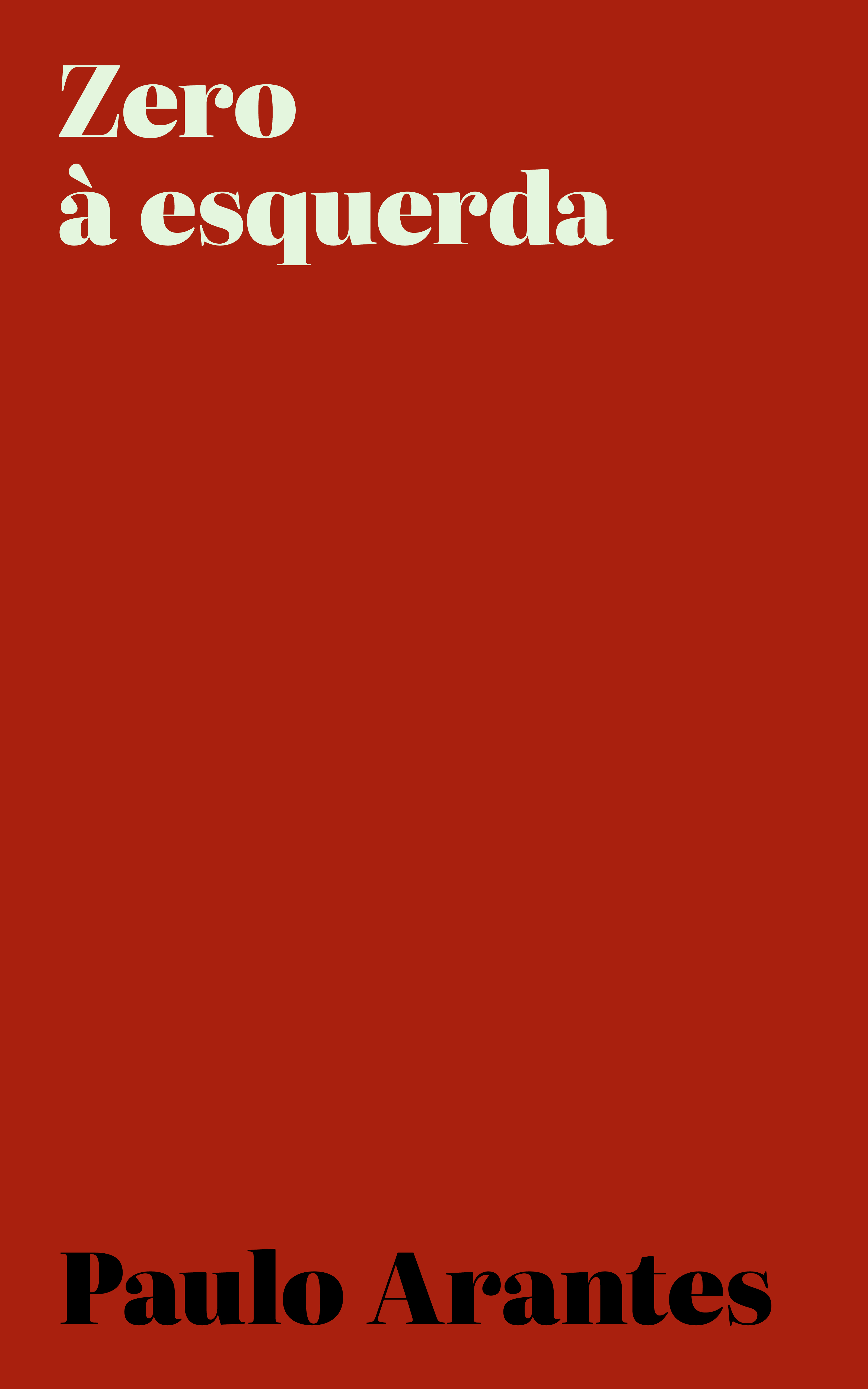What is left for the Left
2004
Synopsis
What is left for the Left is a compilation of articles written by Paulo Arantes, as well as interviews and other expositions provided by the author from 1997 to 2003. Originally conceived to close the namesake collection directed by Arantes and Iná Camargo Costa for the Vozes publishing house, the work ended up being released as part of the “Baderna” collection from the Conrad publishing house in 2004. It is also the first group of essays published by Arantes after he formally retired from the university—which, according to Roberto Schwarz, marked the beginning of Arantes’s “second career”, more audacious and incisive.
The wordplay of the title indicates the impertinent position that permeates this book: a rejection of both the capricious nature of the good old left and the pragmatism of the new results-oriented progressivism. The first and last essays express the historical impasse faced by the author. While the first one diagnoses the PSDB era’s blackout and the eclipse of the Brazilian critical tradition, the last one goes from the suicidal conversion of the newly elected Lula administration to the fundamentalism of economic orthodoxy. We thereby find ourselves in an inverted world where the center increasingly resembles the periphery, the Marxist discourse emerges as a tool of the ruling class, and the destructive threat to order comes from not from the bottom, but from the top. Acknowledging that the left no longer has “the compass of 'significant' words that allowed it to lead the path to emancipation”, the book aims to rethink, from scratch, what it means to criticize ideology amid a “single thought” system. In fact, as the author continues, recapitulating the reformulations that Western Marxism had to undergo in order to address the singularities of our peripheral dynamics—at once archaic and modern—, starting from scratch is our specialty.
Faced with the hegemony of a new type of imperialism, anchored in the shifting ground of world currency issuing, backed by nothing but pure military power since 1971, the essays fire at both the globalization apologists and the motto of an incomplete national formation. The aforementioned absence of stable references imposed by the circumstances can be sensed in the vertiginous writing, which articulates apparently disparate issues such as the Brazilianization of the world, the link between intellectual experience and the national imagination, the business grammar of the NGOs, the up-to-dateness of the Communist Manifesto and May 68, the reception of Marcuse's work in Brazil, the meaning of ‘utopia’ and ‘revolution’ today, the aestheticization of money, the spectacularization of the artistic institution, and the “besieged individuality” of the consumer subject in image-driven capitalism. Meanwhile, the Frankfurtian diagnosis of a non-antagonistic society where “reality becomes an ideology of itself” is updated to twenty-first-century capitalism. After all, what is left for the left, once the development of the productive forces has swallowed, along with the society of labor, the very evolutionary horizon that fostered not only the positivism of the liberals but the struggle dynamics of their socialist opponents? The answer, of course, is up to the reader.
(Book review by Artur Renzo)
Keywords: Brazilianization; globalization; imagined communities; nationalism; nation; Benedict Anderson; Herbert Marcuse; Jürgen Habermas; Ernst Bloch; Robert Kurz; Slavoj Žižek; 1968; FHC; Lula; contemporary art; NGOs; World Bank; risk society; utopia; revolution; ideology criticism; fetishism; imperialism; Critical Tradition; single thought; São Paulo school of thought.

Series
Categories
License

This work is licensed under a Creative Commons Attribution-NonCommercial-NoDerivatives 4.0 International License.


